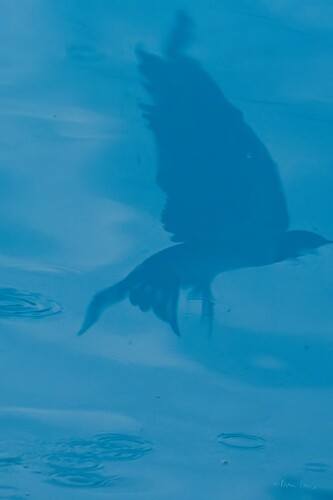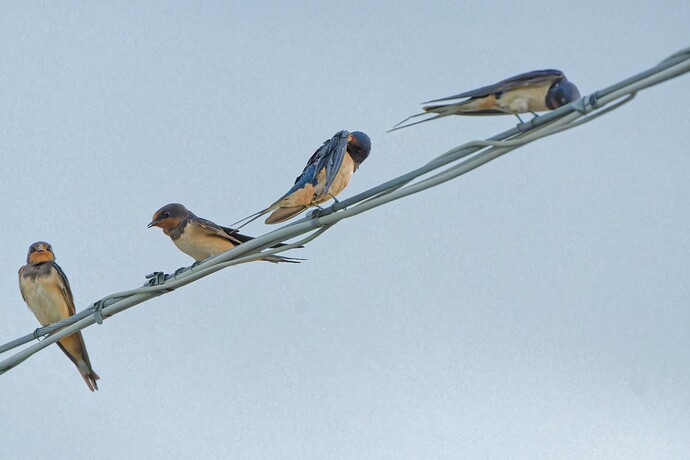The subject recognition parameters are set for eye/head (as far as I understand it, in descending order or priority). I might try adding /body to the list, but there is no option to set for body only.
My opinion, not fact, 1/2500th shutter should be good to minimize camera movement.
Indeed it should, but the movement blur about which I worry is the bird’s. From what wikipedia and Google’s Gemini have to say, the swallow’s airspeed max is about 30mph. I am sure you remember from your school days that this is 88 feet/second. Compounding this we have movement at the wingtip. Gemini was unable to give a precise answer about wingtip speed “because of the difficulties in making the measurement”; but guessed at “several 10s of metres/second”. All of which means that some motion blur is unavoidable. At 60m/sec a target moves about one inch in the 1/2500 exposure.
Next opinion, ISO 800 should be fine, but on my Nikons, I would go much higher.
I set the ISO to auto (that is the camera is in manual with the shutter speed and aperture nailed down; the camera decides the ISO within my target range, plus or minus any backlight adjustment I may set). My max was set to 10000 but the camera decided that wasn’t necessary. And I agree with you, the frame is too dark. The camera’s AF area (within which it must find the target) was set to Wide (that is: virtually the whole sensor), and it may be that when one has it set thus the spot metering is based not on the focused sensors (as was my reading of the manual) but on all the sensors in the frame, That is a project I shall be able to research more thoroughly during the coming winter. Or even fall.
Even if this bird has gone on vacation, there must be other birds you can practice with?
Probably, but none so testing. Unless I drag my wife off to the nearest heronry (it’s a one hour drive, so I shall probably have to bribe her with lunch) I shan’t see any “interesting” birds until I hit the Algarve in February. And the storks there aren’t at the races compared with swallows. Much bigger, and very graceful (apart from their clucking), but nothing like as fast or as nimble.
Still, we shall have the fall colours to amuse us before that. The grape harvest has started, and soon the vines will be going through the gold/red/no leaves cycle.


